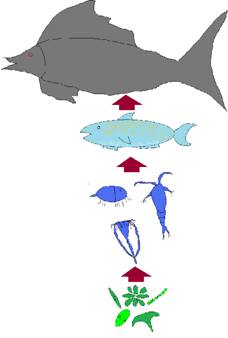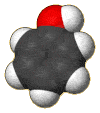Ecology
 Every year, 2000 new synthetic chemicals are introduced. Luckily, there are ways to predict how a chemical will act in the environment before you start dumping it into streams... One of these methods is called an algal toxicity test, also called a bioassay.
Every year, 2000 new synthetic chemicals are introduced. Luckily, there are ways to predict how a chemical will act in the environment before you start dumping it into streams... One of these methods is called an algal toxicity test, also called a bioassay.
The idea behind the test is that algae form the base of the food chain in many waterways and if you mess with them, you mess with the entire ecosystem. Not good.
To conduct this test, we’ll take some algae and expose it to different concentrations of a chemical. We’ll then measure the algae’s growth rate for a week and determine if any of the chemical concentrations were high enough to cause a 50% reduction in the algae population. The chemical concentration that causes a 50% reduction in algae is called the threshold concentration.
Let’s give it a try.... We’ll test a rather nasty chemical called "phenol", which is the embalming chemical of choice, except for its disconcerting tendency to turn dead tissues a bleached-white color. It's used in making CDs, DVDs, and fiberglass for automobiles, and it's also the basis of bisphenol A (BPA), which was recently the subject of a health scare involving water bottles (short version - don't drink water from a bottle marked with plastic code 7).
 There are 4 test tubes in this experiment. One will be the control. The control is simply the algae growing alone. It will be what we compare the other experimental tubes to at the end of the week to know how much algae we could have had (if not for the poisonous chemical).
The data table below gives the growth rate for each test tube after one week. The beginning cell density for the algae was 1×1010 cells/mL. Calculate the final algae cell density in each tube.
There are 4 test tubes in this experiment. One will be the control. The control is simply the algae growing alone. It will be what we compare the other experimental tubes to at the end of the week to know how much algae we could have had (if not for the poisonous chemical).
The data table below gives the growth rate for each test tube after one week. The beginning cell density for the algae was 1×1010 cells/mL. Calculate the final algae cell density in each tube.
(To make this problem interactive, turn on javascript!)
- I need a hint: Find the multiplier from each test tube growth rate
- ... another hint ... : Begin with the starting cell density of 1 x 1010
- ... another hint ... : Calculate for 7 timesteps
| Test Tube | Algal Growth Rate/Day | Algae cell density on Day 7 |
| Full strength | 12% | |
| Half strength | 18% | |
| One quarter strength | 22% | |
| Control (no chemical) | 31% |
From your calculations, what was the threshold for Phenol ?
(To make this problem interactive, turn on javascript!)
- I need a hint: You need to compare each test tube cell density to the control's
- ... another hint ... : You are looking for at least a 50% reduction in algae
- ... another hint ... : Thatís a density of about 3.3×1010
I think I have the answer: Phenol: half strength
Copyright University of Maryland, 2007
You may link to this site for educational purposes.
Please do not copy without permission
requests/questions/feedback email: mathbench@umd.edu